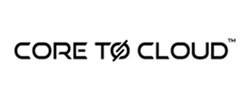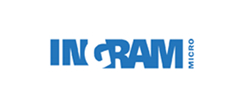Monday, October 07, 2024 by Shelley Hirst
Every business wants to believe they’ve nailed lead generation. They’ve invested in the best tools, hired top talent, and partnered with trusted providers. On paper, it all looks good.
Yet success isn’t just about having the right suppliers and latest gizmos - it’s often about fixing internal issues. Whether it’s outdated processes, office politics, or pet projects that don’t deliver, sometimes you must face hard truths.
It’s tough but letting go of what doesn’t work is essential for growth. A streamlined, aligned approach will do more for your pipeline than any fancy tool ever could
Pet projects: Letting go of what doesn’t work
Every business has pet projects—those initiatives someone loves but aren’t delivering. It might be a favourite event or a CEO-approved campaign. But if these aren’t moving the needle, they’re just distractions. Hanging on in the hope they’ll come good is like watering a dead plant. To grow, you need to cut the fat and focus on what works.
Ask yourself: "Is this contributing to the pipeline?" If not, it’s time to say goodbye, no matter how much it stings.
Internal processes: Streamline or get left behind
Often the biggest obstacle to a successful pipeline is internal, not external. If approvals take weeks, departments work in silos, or your processes are outdated, you’re hindering progress. Streamlining is not about cutting corners; it’s about removing friction.
Reassess approval chains, break down silos, and adopt faster ways of working. A smooth-running internal machine is far more valuable than the shiniest martech stack.
Office politics: The silent pipeline killer
Office politics can quietly sabotage pipeline efforts. If sales and marketing are more concerned with credit than results, or if decisions are driven by loud voices rather than sound strategy, the pipeline suffers. Success demands alignment and collaboration. It's not about winning internal battles; it's about winning customers.
Create a culture of open communication and shared goals to ensure everyone is pulling in the same direction.
Data overload: Quality over quantity
In the era of big data, it’s easy to drown in metrics. Businesses often collect too much data without asking what it actually means. More isn’t better—what matters is the right data. Focus on the metrics that truly drive strategy. Don’t get stuck in analysis paralysis.
Understand which data points indicate genuine buyer interest and use that to guide decisions. It’s not about having 100 metrics—it’s about knowing which ones matter.
Martech addiction: The tools aren’t the strategy
Everyone loves new tools, but tools alone aren’t a strategy. Many businesses throw money at martech, expecting it to be a magic fix without a clear plan. Before investing in yet another tool, ask: "How does this fit into our strategy?" The tools should support your goals, not dictate them.
Just like a fancy gym membership won’t get you fit without a plan, martech won’t solve your problems without a strategy in place.
Content that speaks to nobody
Content might be king, but only if it’s speaking to the right audience. Businesses often fall in love with their content, but if it’s not resonating with the target audience, it’s just noise. High-quality content delivers value and addresses your audience’s needs. If your content isn’t driving engagement or conversations, it’s time to rethink your strategy.
Make sure your message speaks to your audience's pain points and guides them through their journey.
Rethinking ROI: focus on revenue, not vanity metrics
Leads, clicks, and impressions look good on paper, but if they’re not converting into revenue, they’re just vanity metrics. The real measure of success is revenue, not the number of leads. Look beyond the surface metrics and focus on what’s generating tangible results. Are your campaigns producing leads that convert? Are they driving actual sales?
Reallocate resources to what works and cut what doesn’t. Revenue is the goal, not superficial numbers.
Accountability: Data should drive results, not finger-pointing
The blame game between sales and marketing is a major barrier to pipeline success. When targets aren’t met, it's easy to point fingers. Instead, both teams need to be accountable, agree on what a qualified lead looks like, and have shared success metrics.
When teams are aligned, the finger-pointing stops, and everyone works toward a common goal. Accountability and collaboration will drive better results than endless blame.
Change isn’t easy, but it’s necessary
Change requires bold steps, re-evaluation, and a willingness to abandon what’s no longer effective. Real growth comes from challenging the status quo and focusing on what truly drives results. Sometimes, you have to break things down before building them back up stronger and more aligned with your goals.
Embrace tough love for real growth
Building a successful pipeline isn’t just about having the best tools or suppliers. It’s about being honest about what’s working and what’s not, making tough decisions, and focusing on activities that deliver results.
Streamline processes, foster collaboration, and concentrate on initiatives that bring real growth. Sometimes, you need to be told that your "baby" is ugly. It’s in confronting these uncomfortable truths that real progress begins.
Market Activation: Creating demand without the drama
Market Activation was created so that businesses can adopt a single programme to create demand without the all the drama.
It can be taken in support of other initiatives, when pipelines need fixing, or when businesses don’t have the resources, skills or budgets to do everything effectively themselves.
Frequently Asked Questions
Market Activation identifies in-market buyers (via intent data, behavioural signals) and immediately engages them with tailored outreach (nurture tracks, one-to-one advisor sessions, community invites).
Demand Engine: Targeted outreach (email, ads, sponsorships) that scores clicks → qualified leads → sales-ready appointments.
Performance Dashboard: Real-time visibility into open rates, CTOR, CPL and lead progression via our online sales portal.
Content Amplification: Thought leadership shared in The Amigos Network drives deeper engagement and social proof.
Peer Validation: Prospects get candid feedback from peers on your solutions, shortening the evaluation cycle.
Pipeline Catalysis: Warm introductions and referral paths within the community fuel high- intent conversations.
- Top-of-Funnel: Build credibility through community content and events.
- Mid-Funnel: Leverage peer case studies, expert Q&As, and live demos to answer deep technical questions.
- Bottom-of-Funnel: Invite high-intent members to advisory councils or private 1:1 sessions, often the final nudge before purchase.
- Interesting content: We originate, curate, and syndicate different types of content we know our audiences want to engage with and tell them it’s there.
- Sponsored content: We use sponsored content to drive engagement with individual brands.
- Promotion: We promote that content via multiple channels such as email, social media, YouTube, and so on.
- Identification: We ingest company-level engagement signals and combine it with known contacts that may be researching key topics.
- Segmentation: Members are bucketed by level of intent (high, medium, low) plus ICP fit and company size.
- Activation: High-intent members receive prioritised community invitations (events, focus groups, product deep-dives) to accelerate deals.
- Purchased data highlights who’s in-market.
- Community engagement reveals what questions they’re asking, so your nurture can be hyper-relevant.
- Result: A 2–3× lift in meeting acceptance and pipeline velocity vs. cold outreach alone.
- Marketing owns the nurture tracks, community invites, educational content, and event promos.
- Sales intervenes only at “high-intent + active community engagement” thresholds, with account-specific demos and peer introductions.
- Outcome: Fewer wasted calls and a higher win rate on truly qualified opportunities.
- Engagement Metrics: Community log-ins, event attendance, content downloads.
- Intent Conversion: % of intent-scored members who join private roundtables or request demos.
- Pipeline Velocity: Time from first community touch to opportunity creation.
- Revenue Impact: Contribution of community-sourced deals to overall bookings.
- Average Weekly Open Rate: 40%
- Average Weekly Click-to-Open Rate: 70%
- Average Cost-per-Lead: £45
- Minimum ROI: 500%
- Average Dwell Times: 1 minute 45 seconds




















